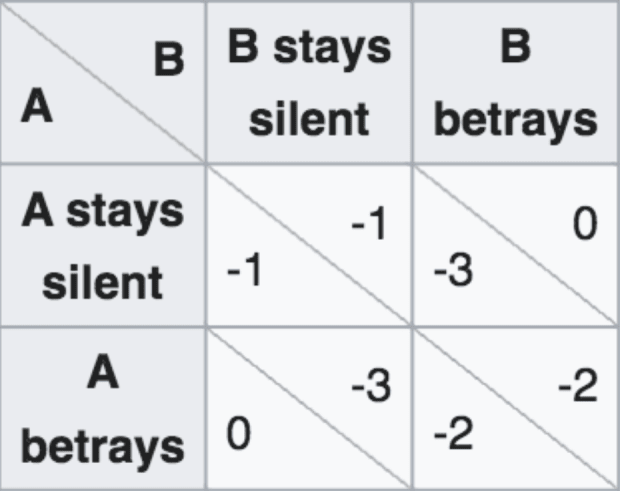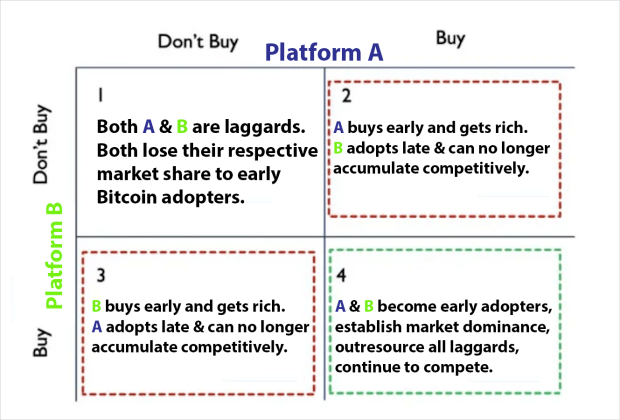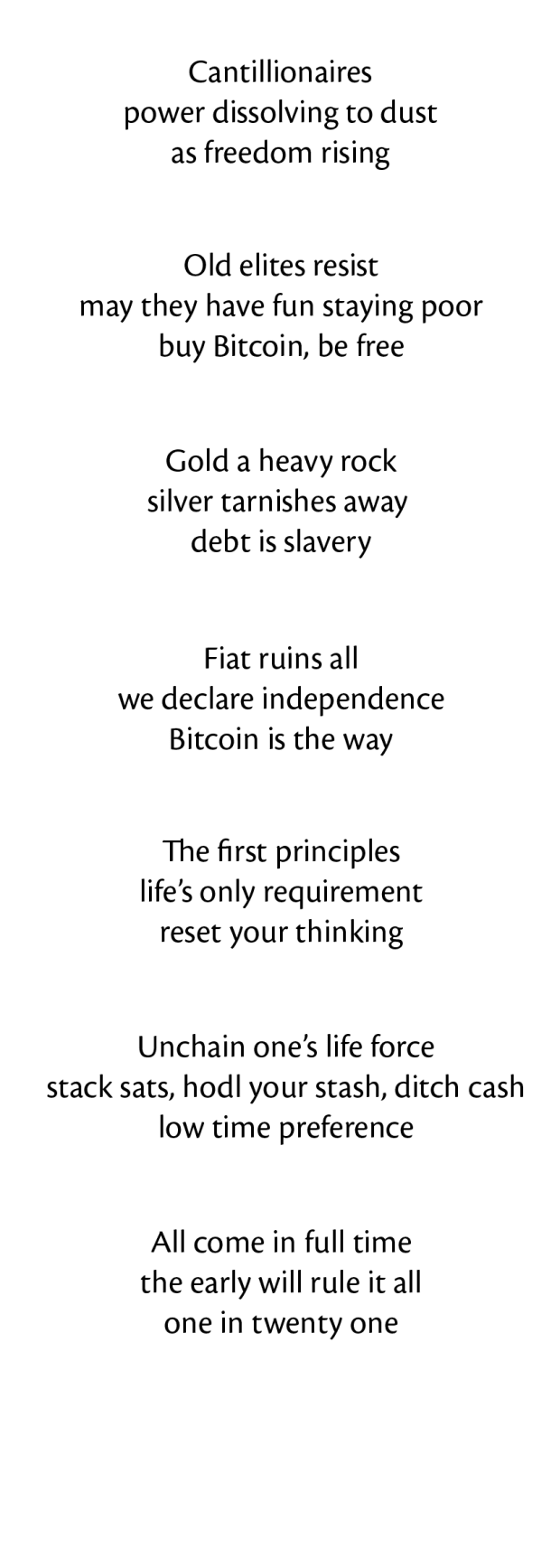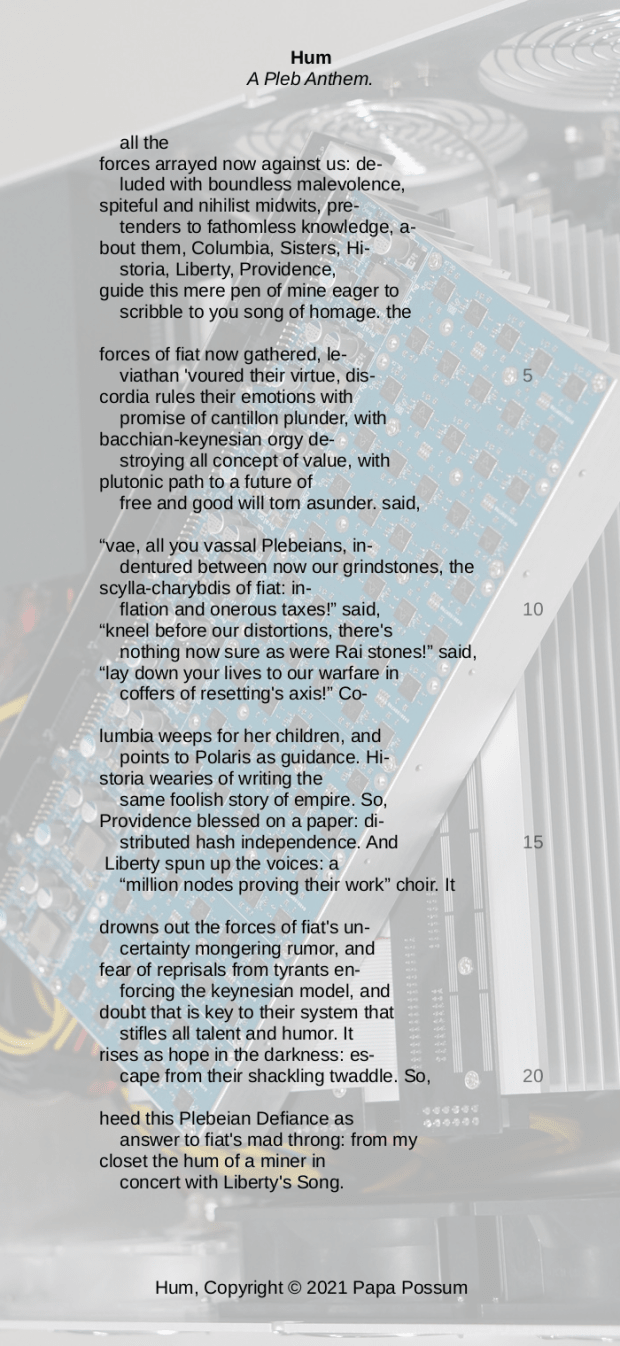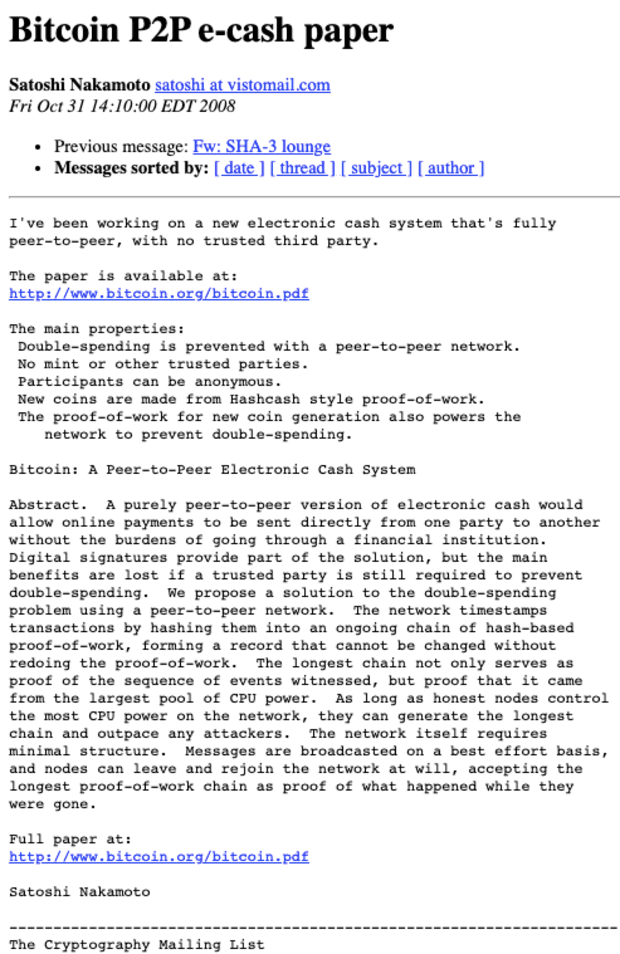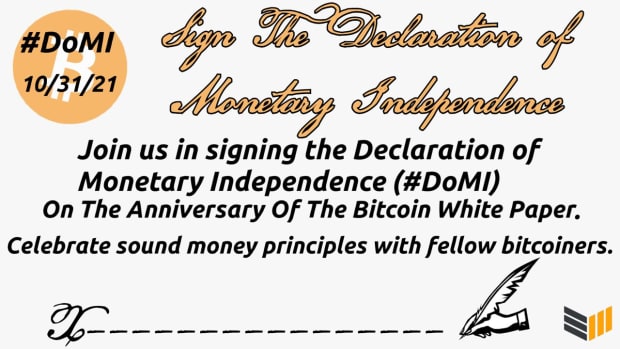
What are decentralized-tech representatives most scared of? And what are their deepest fears in the crypto space?
Tim Draper of Draper Associates and Draper Fisher Jurvetson:
Tim is a pioneer of business ventures in the United States and a co-founder of Draper Fisher Jurvetson, a leading investment firm in early-stage tech startups.
“I am fearless long-term. Bitcoin is coming. Short-term, it is spooky that some people are willing to give up this gift of freedom and trust in favor of government controls. Government controls have destroyed a lot of people’s lives and freedoms.”
These quotes have been edited and condensed.
The views, thoughts and opinions expressed here are the authors’ alone and do not necessarily reflect or represent the views and opinions of Cointelegraph.
Sheila Warren of the World Economic Forum:
Sheila is the head of data, blockchain and digital assets at the World Economic Forum.
“My worst nightmare with the crypto industry is that it will start to believe its own hype and forget that technology — any technology — is not on its own a cure for social problems, including financial exclusion.
I believe in the potential for crypto to enhance equity and inclusion and create new systems that empower people and provide them with agency. But that will only happen if the crypto ecosystem deliberately and intentionally focuses on these problems and includes these communities in the creation of the solutions. Without that, I worry that we will simply repeat processes that got us to where we are today, with so many people in the world cut off from opportunities that could meaningfully enhance their well-being.”
Ryan Sheftel of Radkl:
Ryan is the CEO of Radkl, a quantitative trading firm with a focus on digital assets.
“My worst nightmare for the crypto industry is that it gets co-opted by the current legacy financial industry and regulators, squeezing all innovation and dynamism out. The centers of excellence and new breakthroughs are pushed overseas, and the best and brightest that are looking to work in the industry are forced to find new jurisdictions to pursue their passion and create change.”
Rob Viglione of Horizen:
Rob is the co-founder and team lead of Horizen, a blockchain platform that aims to enable an application-rich, inclusive ecosystem through its leading-edge sidechain solutions.
“My biggest fear for the crypto market is that the U.S. dollar, or some other major fiat currency, suddenly becomes sound money! I mean, a currency responsibly governed with transparency, rules specified in advance and a supply that starts to look bound at something less than infinite. I’m not sure that Bitcoin could survive this kind of sound-money challenge, but at least we’d still have DeFi yield and NFTs to fall back on!”
Phillip Gara of the Render Network:
Phillip is the director of strategy at the Render Network, a blockchain GPU computing platform powering next-generation 3D content creation.
“A lot of artists are creating spectacular CGI using our blockchain service, RNDR, which pools together millions of GPUs mining cryptocurrencies to render out the next generation of digital content. With near-unlimited computing power and on-chain smart contracts, artists are pushing forward the state of the art in hyper-realistic imaging and generative code-based immersive experiences. If you follow some of the laws of exponential growth, it’s possible that we will be able to create synthetic worlds that are nearly indistinguishable from reality, similar to The Matrix. One of our advisers is Beeple, who often creates funhouse dystopias in his ‘Everydays.’ With RNDR, we are collaborating on developing technologies that will enable you to fully immerse yourself in his Everydays — almost literally stepping into the wild, eccentric mind of Beeple. Whether it is a nightmare, a dream or something in between is an open question, but that reality is coming at us all at an accelerating speed.”
Mitchell Cuevas of Stacks Foundation:
Mitchell is the head of growth at Stacks Foundation, which supports the mission of a user-owned internet through Stacks-related governance, research and development, education, and grants.
“My worst nightmare is obviously that someone is going to spill punch on the Metaverse and all these NFTs are going to come screaming to life and wreak absolute havoc on us.
I’m not sure why more people aren’t panicking about this. Where’s Elon when you need him?”
Max Einhorn of 4K:
Max serves as the chief operating officer at 4K, a peer-to-peer marketplace for collectibles and luxury goods powered by NFTs.
“My biggest fear for the crypto industry is that the crypto and traditional worlds will war with each other rather than work together collaboratively. Just the other month, we saw U.S. lawmakers nearly pass a bill that would dramatically expand the U.S. government’s surveillance over the entire crypto ecosystem. They walked it back, but we came close to the brink. We in crypto are not without blame. Crypto culture glorifies DeFi ‘degens,’ where pride is taken in snubbing conventions, even if there are parts of the past that would benefit us today. Many spend more time chasing a few extra percentage points in yield or hyping a memecoin than they do searching for ways to improve the lives of the rest of humanity. We are eager to reinvent without always appreciating all the hard-learned lessons from history that got us to where we are today. Crypto is math. No one can stop it. Those of us building in crypto are wielding extraordinarily powerful tools. With great power comes great responsibility. Please build responsibly.
My second-biggest fear for the crypto industry is that it will lose touch with the revolutionary spirit that birthed this movement. Bitcoin was created during the greatest financial crisis since the Great Depression. It was the result of groundbreaking work done by humans that cared to empower the unempowered, enfranchise the non-enfranchised and wrestle power away from the few to put it into the hands of the many. The newer someone is to crypto, the more distant they are from the original emails on the cypherpunk mailing list that sparked this revolution. They see fast money and join to get a piece of that action rather than to further the ideals that ushered in this wave of abundance. Radical visionaries help society move forward. Stay radical, my friends.”
Mance Harmon of Hedera Hashgraph:
Mance is the co-founder and CEO of Hedera Hashgraph, a next-generation distributed ledger technology that claims to possess higher speeds and security guarantees than existing blockchain solutions.
“Regulatory uncertainty and unintended consequences of well-meaning regulations. We as an industry must work hard to educate all parts of the regulatory ecosystem, in the U.S. and globally, to make sure that the people writing policy, crafting consumer protections and shaping the industry going forward have all of the information and understanding they need to mature the industry in a way that benefits the average consumer and user of distributed networks, encourages innovation to flourish in a responsible way, and does not cause the U.S. to fall behind other countries.”
Joel John of LedgerPrime:
Joel is a principal of DeFi and VC investing at LedgerPrime, a quantitative and systematic digital asset investment firm.
“My biggest fear is that we fail to translate what we are doing to the common, average person in a way that is approachable and useful for mass markets. Very few applications do that currently. Axie Infinity is a good example, OpenSea is another — the industry and its stalwarts should not get lost in translation.”
Halsey Minor of VideoCoin:
Halsey is the strategic technology partner at VideoCoin Network, which provides video infrastructure for the blockchain-enabled internet and features token-driven decentralized video encoding, storage and distribution.
“My fear is that the SEC will ignore the tens of billions of dollars being lost today by consumers in ETNs (exchange-traded notes) and instead focus on the highly innovative DeFi space. ETNs are the new mortgage-backed securities. There are already many whistleblower complaints that are being ignored. Mortgage-backed securities, Libor, Wells Fargo, gold and silver market manipulation, and now ETNs — all ignored by the SEC until it was too late. They need today to stop banks from creating tragically toxic securities, not destroy real innovation.”
David Khalif of Viridi Funds:
David is the co-founder and head of operations at Viridi Funds, a registered investment adviser and emerging fund manager that offers environmentally conscious crypto investing options.
“Our biggest nightmare is that crypto miners will continue to keep digging into the earth and finding no new Bitcoin. After spending so much on mining equipment and going underground to search in caves, we have yet to find any Bitcoin. We seem to only encounter this weird item called ‘gold.’ We don’t plan on giving up yet, but rest assured that when we find our first Bitcoin, we will make an NFT of it.”
Darren Franceschini of BlockBank:
Darren is the co-founder and chief operating officer of BlockBank, a multi-protocol utility wallet that combines the power of decentralized and centralized technology in a simple, secure application.
“My biggest fear is losing my private keys for good — that would be the biggest nightmare. Or experiencing what I’ve heard others go through being held hostage to hand over their keys.”
Daniela Barbosa of Hyperledger:
Daniela is the executive director of Hyperledger and the general manager of blockchain, healthcare and identity for the Linux Foundation.
“My greatest crypto nightmare is that a big crash or even a wave of extended volatility unnecessarily tarnishes the use of distributed ledger technology by enterprises, which aside from bad press would be otherwise unaffected.”
Caitlin Long of Avanti Financial Group:
Caitlin is the founder and CEO of Avanti Financial Group, an operator of a crypto-asset banking company focused on providing regulated services for digital assets.
“My worst nightmare is the discovery of a zero-day exploit in the Bitcoin Core code that no one has discovered yet. Every day that goes by, the probability of this diminishes exponentially — but it will never be zero.”
Andrew Levine of Koinos Group:
Andrew is the CEO of Koinos Group, an engineering-first company led by battle-hardened blockchain veterans with unrivaled experience as core developers and architects of the BitShares and Steem blockchains.
“My worst nightmare is that we are stuck with smart contract platforms that cater to crypto early adopters and treat ordinary people as second-class citizens. Ordinary users expect a feeless experience, and ordinary developers expect to be able to work in the programming languages they already know and love. These people don’t care about how it all works or whether something is ‘Ethereum-compatible.’ The only people who care about that are already deep in the space. Ordinary people just want something that is easy, pleasant and free to use. Until we have that, we won’t have true mass adoption.”
Amanda Keleher of ConsenSys:
Amanda is the chief people officer at ConsenSys, a global community of developers, businesspeople, programmers, journalists, lawyers and others made to create and promote blockchain infrastructure and peer-to-peer applications.
“My worst nightmare is to wake up in five years and realize the crypto industry has become just like the ‘old Wall Street’ — an exclusive industry. The crypto ecosystem is a unique opportunity to build a more inclusive global financial ecosystem empowering more women and more minorities. And to build it, we need to have the most talented, diverse people to do it.
My fear is we fail to embrace this opportunity to make real, impactful, long-lasting change. Let’s not be scaredy-cats — let’s give everyone a pumpkin to talk about... Boo!”
Alan Chiu of Enya/Boba Network:
Alan is CEO of Enya, a data privacy company that operates the world’s largest secure multiparty computation platform. Alan also serves on the Stanford Graduate School of Business Alumni Board, as well as on the board of Stanford Angels and Entrepreneurs as co-president.
“My biggest fear would be the U.S. following China’s crypto policy, driving innovation away from the country. Crypto would survive, but the U.S. would suffer from missing out on the wave of innovation coming out of crypto — Web 3.0 and DAOs, among other things.”
Introduction
Back on Oct. 31, 2008, a person — or a group of people — who called themself Satoshi Nakamoto published a nine-page paper describing a “purely peer-to-peer version of electronic cash” that introduced a brand-new online payments system called Bitcoin (BTC). Last year, for the white paper’s 12th birthday, Cointelegraph collected industry leaders’ wishes for Bitcoin.
This year, Bitcoin turns 13, and since Oct. 31 is also the day on which Halloween is celebrated, we decided to combine these two events into one. Cointelegraph reached out to the deepest corners of the souls of a group of crypto industry insiders to find out their greatest fears and nightmares about crypto, asking them: What do you fear most of all?
via
cointelgraph.com























